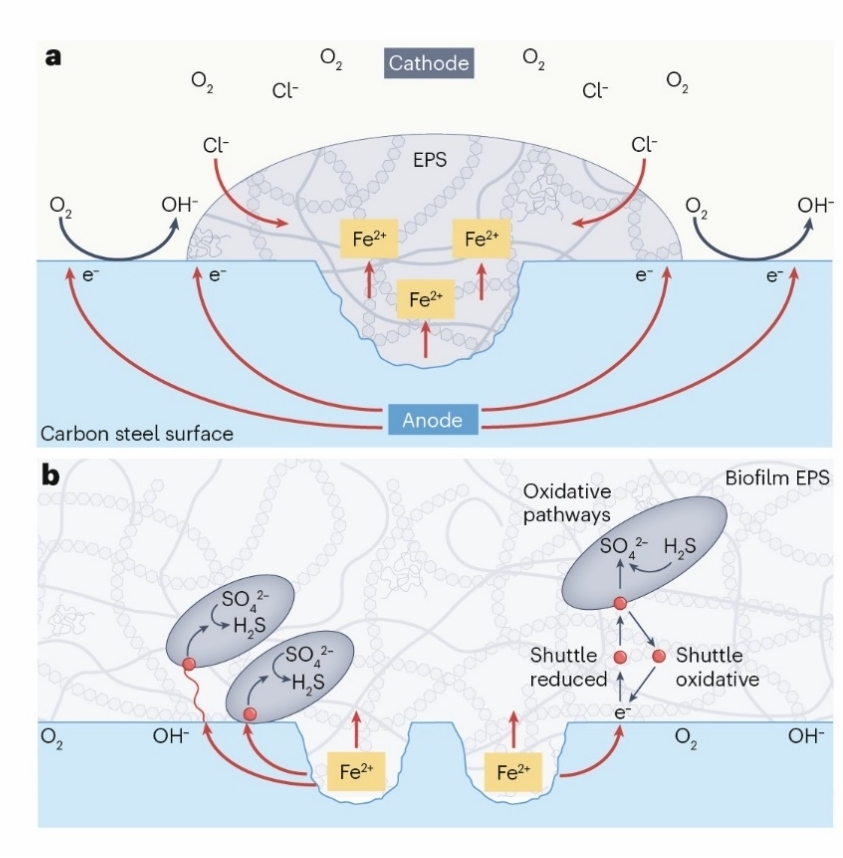Scientists Report Role of Extracellular Polymeric Substances of Biofilms
Recently, the research team led by Prof. Hans-Curt Flemming from the Institute of Oceanology of the Chinese Academy of Sciences (IOCAS) repored the role of extracellular polymeric substances of biofilms.
The study was published in Nature Reviews in Microbiology (IF 69,2) on Sep. 27.
Researchers focused on the material, which represents the "house" of biofilm bacteria: the matrix of extracellular polymeric substances (EPS), which consists mainly of polysaccharides, proteins, nucleic acids and lipids. The EPS matrix provides a dynamic, functional and protective shared space for biofilm cells, in which the bacteria not only organize their social interactions, but it also is the stage for synergistic interactions among EPS components.
Examples of EPS's function include intercellular communication and protection, and concentration gradients at very small distances, providing strong habitat diversity. The EPS constitutes the functional interactions on which the evolutional success of biofilms is based.
Interestingly, once formed by the biofilm bacteria, the EPS leads a life on their own, independent of their producers. By retention of exoenzymes, an extracellular digestion system is formed around the biofilm cells. This degrades complex biopolymers even from particulate materials and allows the bacteria to utilize the resulting low molecular products as substrates. "In this digestive function, they represent a bottleneck for global polymer biodegradation and a significant factor in carbon sequestration, taking into consideration their immense quantity of at least 50 Pg Corg," said Prof. Flemming.
Furthermore, the EPS acts as an absorbing sponge, accumulating surrounding molecules and particles as possible nutrients which can also include toxins and pollutants, for which they can act as a source upon matrix disaggregation.
As a hydrogel, the EPS plays an important role in water retention, and, thus, in drought resistance of soils. In sediments, they can increase cohesion and contribute to sediment stability. EPS allows for the establishment of stable biofilms, which is crucial for natural self-purification of drinking water and wastewater, so they are exploited for biological drinking water and wastewater treatment worldwide.
As concentration cells, EPS can promote pitting corrosion of metals. Above that, caused by oxygen depletion, they can generate anaerobic pockets right on the surface of metals, offering a habitat to anaerobic bacteria such as sulphate reducers, which are classical "industrial pathogens" frequently found to cause microbially influenced corrosion (MIC).
On the other hand, EPS comprises valuable products which are increasingly employed in biotechnology, e.g., flame retardants, ice cream stabilizers, biosurfactants for tertiary oil production, bacterial cellulose, gelling agents such as hyaluronic acid, xanthan, curdlan, or probiotic polysaccharides as antioxidants.

Role of EPS in MIC. a) Differential aeration cell due to diffusional transport limitation of oxygen. b) Direct pathways of extracellular electron transfer by active electron shuttles in EPS or cellular appendages such as pili or nanowires.
Flemming, H.-C. et al. (2024). Microbial extracellular polymeric substances in the environment, technology and medicine. Nat. Rev. Microbiol.